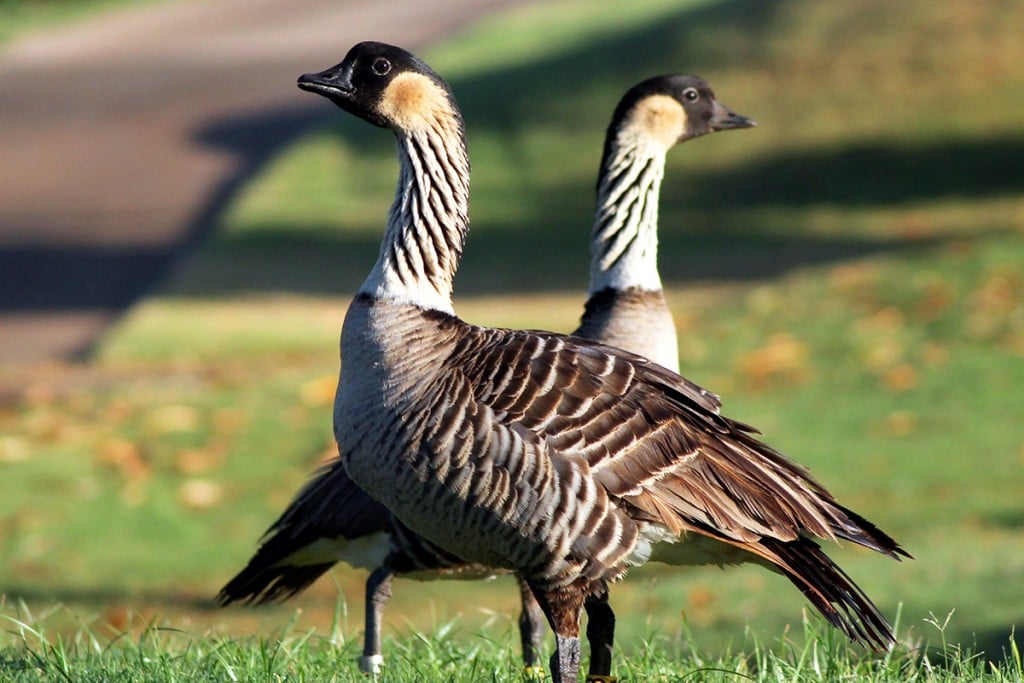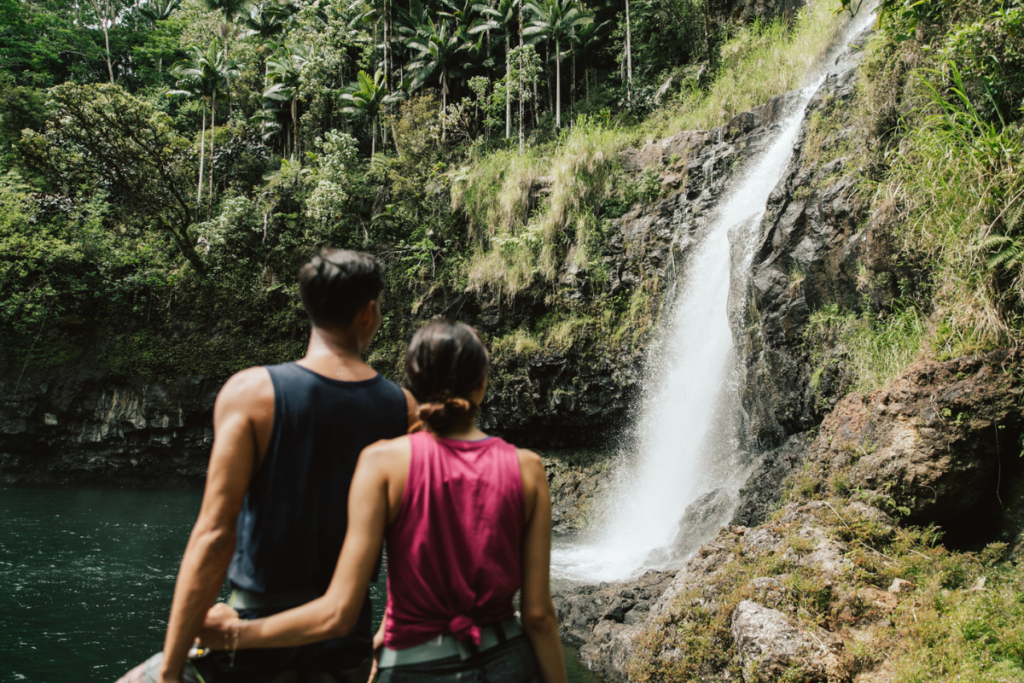7 Fun Facts About the Nene, or Hawaiian Goose
There’s more to Hawaii’s state bird than its endangered status.

Perhaps you’ve seen the friendly, distinctively-colored nene (pronounced “nay-nay”) at a park, wildlife refuge, ranch, golf course or zoo in Hawaii. But there’s more to these inquisitive birds than meets the eye.
1. The nene goose is descended from the Canadian goose.

Based on fossil DNA, all Hawaiian goose species are closely related to the giant Canada goose, and are thought to have migrated to the Islands over 500,000 years ago. Since then, they’ve developed differences though, like padded toes, claws and less webbing on their feet than their distant relatives, all the better to walk on rugged lava rocks.
2. The nene is the rarest goose in the world.
When Captain James Cook arrived in the Hawaiian Islands in 1778, his naturalists noted that the goose was quite common. But hunting, and predators like mongooses, pigs and cats, reduced the nene population to just 30 birds by 1952. The goose has since been bred back from the brink of extinction and re-introduced into the wild. Today, with 2,500 birds in the wild, it is still the sixth-most endangered waterfowl species in the world.
3. The nene became Hawaii’s state bird in 1957.

4. The Hawaiian name “nene” comes from the bird’s soft, almost gentle call.
The literal translation of the word in olelo Hawaii (Hawaiian language) means “to chirp, as a cricket; to croak … whimpering, as a sleeping infant.” The goose has also been known to “moo” like a cow.
5. There are Hawaiian geese in England today.
When the nene were in danger of going completely extinct, an English conservationist named Peter Scott, founder of the Slimbridge Wetland Wildlife Reserve near Gloucestershire, England, helped to save them. He brought breeding pairs to his reserve, and while some of them were returned to Hawaii and released into the wild, several hundred of their descendants still live at the refuge.
6. One of the favorite foods of the nene is the bright red ohelo berry that grows on lava.
It’s related to the cranberry and quite delicious! The ohelo berry is considered sacred to the volcano goddess Pele and offerings of branches with fruit were often thrown into Kilauea volcano on Hawaii Island by Hawaiian cultural practitioners.

Photo: Getty Images
7. Nene are mentioned in the Kumulipo (the Hawaiian creation chant) as being guardian spirits of the land.
In Hawaiian culture, they are seen as a symbolic joining force between the mountains and the coast because of their seasonal movements.
Where To See Nene

Although most nene live in remote areas far from people, you can still find them in higher-trafficked places like Haleakala Crater on Maui, Kilauea Lighthouse on Kauai and the Turtle Bay area on Oahu. The Honolulu Zoo also houses some tame nene. The best place to see nene in the wild is on Hawaii Island, with the largest number living in and around Hawaii Volcanoes National Park. Please remember when you’re admiring these rare birds to keep your distance—they are federally protected and listed as an endangered species. It is unlawful to touch, feed, harass or chase the nene, and each bird is banded.


